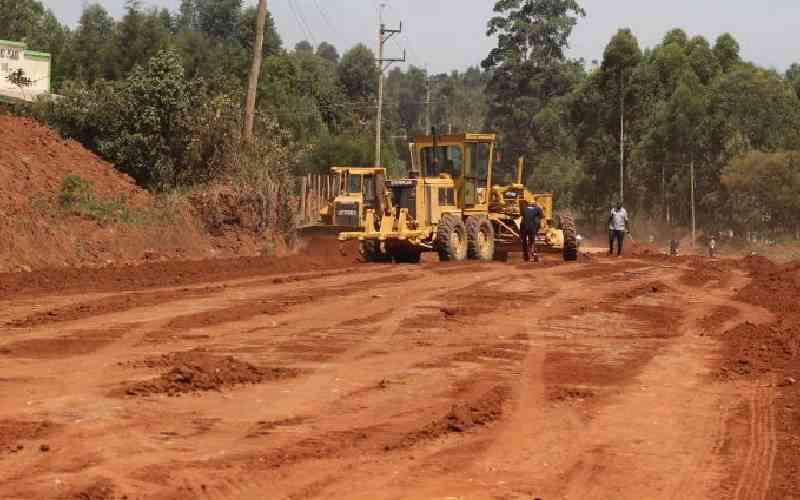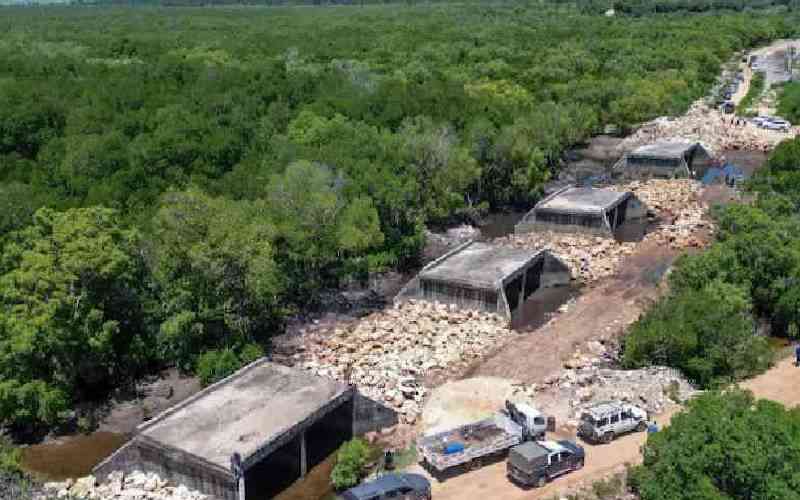Nairobi; Kenya: Adolf Hitler, for all the ills and misery he caused Germany and the modern world by introducing fascism and igniting the Second World, is at least remembered for one thing: he built major highways in his country which remain to this very day. Though his purpose was to provide proper means of transport for war mongering and military control, the roads could not go with him to the grave when his evil purpose was defeated. The autobahn remains Germany’s pride to this very day.
In the USA, soon after the Second World War, the government embarked on a major project of highway construction. Some people argue that this was pushed by the automobile industry eager to promote their business over and above that of the railroad industry. Others point out that General Eisenhower was so enthralled by Hitler’s autobahn that he decided to outdo the fallen Führer.
Whatever the case, the result was Amajor inter-state highways that tremendously boosted economic integration, inter-state communication and, of course, the geometric progression in automobile sales.
When the British arrived in Kenya and decided to promote a settler economy they were not fools. The colony could not be built on “nothingness”: it had to pay for itself through earning money from outside by exporting some things. There was already a consumer market within the British Empire that demanded tea, coffee and wheat: and the highlands at the centre of the new colony were ideal for this provided White farmers could use it for this purpose.
Building a railway line to connect the newly-found White Highlands with the Empire Market was therefore a condition without which the colony could not be worth it. The railway was built in record time with imported labour from India and Africans working almost for nothing. Interestingly, this is the only railway line known to Kenyans in our history.
It is as if we were never independent 50 years ago and this economy has not changed to demand more railroad transport after the colony was founded.
The reformist NARC government proposed the building of a Standard Gauge Railway (SGR) from Mombasa to the Ugandan border going through to Kampala, Kigali and Eastern Congo.
Implementation of this project has taken far much too long compared to the speed with which the colonialists did the first railway over a century ago.
NARC further proposed a dual carriageway from Mombasa to the Ugandan border through to Kampala, Kigali and Eastern Congo. These two projects — railway and road construction —would have been carried out together. But I think we quite often listen too much to “advisers”. As Minister for Planning and National Development, I remember being “advised” that Kenya could only afford a dual carriageway from the Machakos junction to Nairobi’s CBD on the Nairobi-Mombasa Highway. Reason being that the traffic load was only sufficient on this short distance!
Now I wonder what these “advisors” would have said regarding the multi-lane Nairobi-Thika Highway before it was built.
On our side we commit another cardinal sin: we load these projects with too many kickbacks and other corrupt practices, making them expensive, uneconomical and against the public interest. Economist David Ndii has written on this extensively in our newspapers, coming to the conclusion that the cost implications makes the present plan for a SGR in Kenya untenable!
Let me say the following: both Hitler and Eisenhower would have failed in their highways construction projects had they followed the Kenyan way of contracting service providers. The reason we established an National Economic and Social Council (NESC) and a Vision 2030 Secretariat was to monitor such major capital projects and to provide advisory and moderating effect on politicians and bureaucrats who tend to utilise such projects as gravy trains.
I notice that both the NESC and the Vision 2030 Secretariat are currently silent by their absence: hence the complications we have run into which Dr Ndii has written on in more detail elsewhere than I will care to do here. But we need to focus on railways and highways construction at the national and county levels urgently and seriously. And let counties disengage from the construction of tiny little roads, cheaply built, as tokens of development or “achievements”. Kenya requires her own autobahns and inter-county highways.
As an agricultural economy, and given the problems we are having with global warming, a major solution to our poor agricultural production at the moment lies in improving infrastructure in agriculture. Let us begin with what we have. It is commendable that the National Irrigation Board (NIB) recently invested in improving irrigation in the Mwea Rice Scheme and the Ramisi Sugar project where cane maturity will only take 11 months and productivity will be internationally competitive.
The Expanded National Irrigation Programme should focus on making our national sugar production competitive. Cane production in the Nyando Basin in Kisumu County, for example, should be irrigated under this programme and should be complemented by a light rail project to transport cane from the field to the factories. It must also be noted that sugar factories are, in principle, no different from coffee or tea factories which are owned by farmers.
Stay informed. Subscribe to our newsletter
Sugar farmers have always been ready to buy shares in these factories or to own them altogether. But unfavourable national agricultural policies since independence have made this to appear as an impossibility. Under the ownership by farmers, these factories would have performed much better than they have under the bureaucratic management by the national government. The farmers, unlike the bureaucrats, know where the shoes pinch: they would not have sat by to see their assets looted or benignly left to waste away through mismanagement.
Now that agriculture is a devolved function, the Senate Committee on Agriculture should take up this matter urgently: how are we going to improve infrastructure in agriculture to improve productivity and to make our agricultural production internationally competitive? Addressing this question must involve both the national and county governments.
The capital investment needed will require that counties use opportunities to borrow locally and internationally on terms which are user friendly to the farmers and to the economy as a whole.
 The Standard Group Plc is a
multi-media organization with investments in media platforms spanning newspaper
print operations, television, radio broadcasting, digital and online services. The
Standard Group is recognized as a leading multi-media house in Kenya with a key
influence in matters of national and international interest.
The Standard Group Plc is a
multi-media organization with investments in media platforms spanning newspaper
print operations, television, radio broadcasting, digital and online services. The
Standard Group is recognized as a leading multi-media house in Kenya with a key
influence in matters of national and international interest.
 The Standard Group Plc is a
multi-media organization with investments in media platforms spanning newspaper
print operations, television, radio broadcasting, digital and online services. The
Standard Group is recognized as a leading multi-media house in Kenya with a key
influence in matters of national and international interest.
The Standard Group Plc is a
multi-media organization with investments in media platforms spanning newspaper
print operations, television, radio broadcasting, digital and online services. The
Standard Group is recognized as a leading multi-media house in Kenya with a key
influence in matters of national and international interest.








